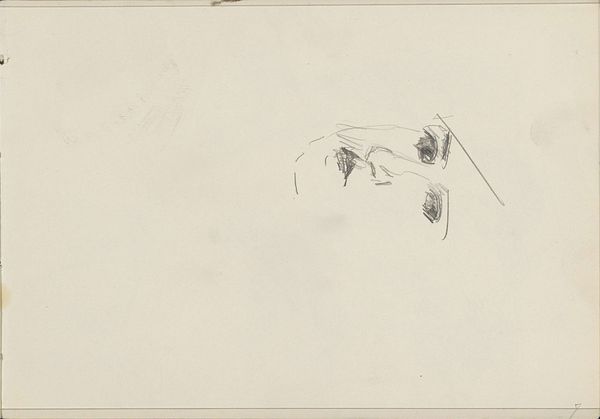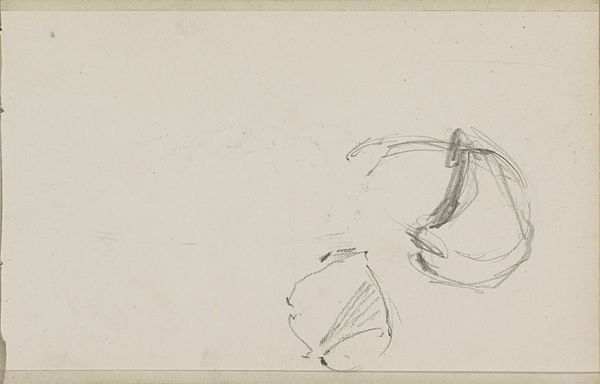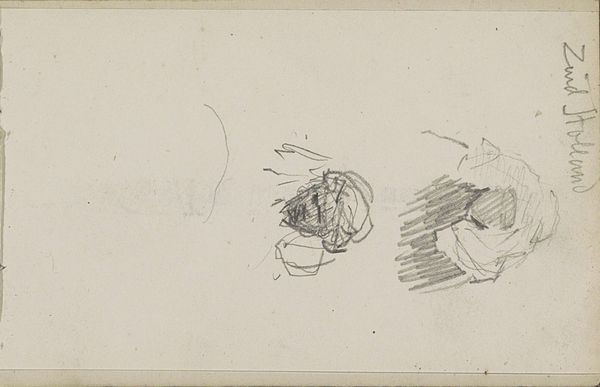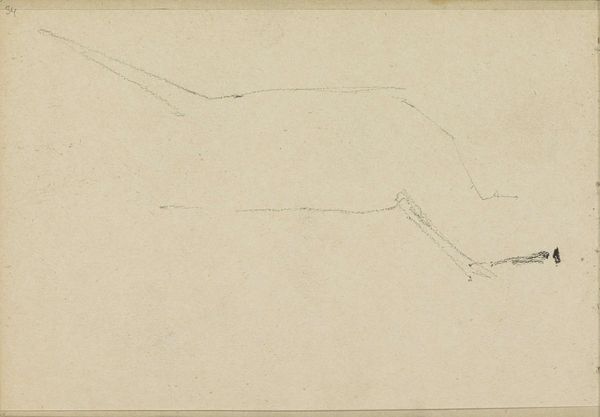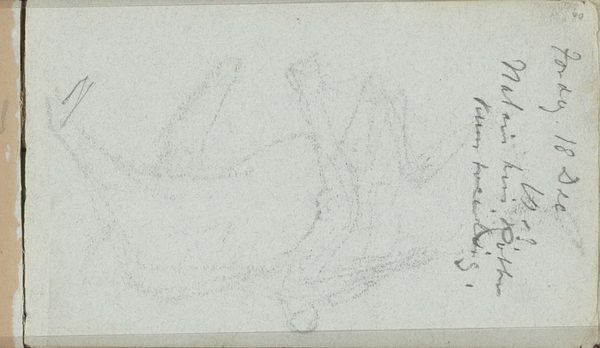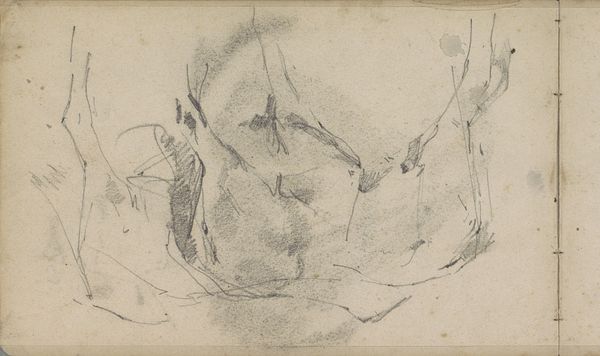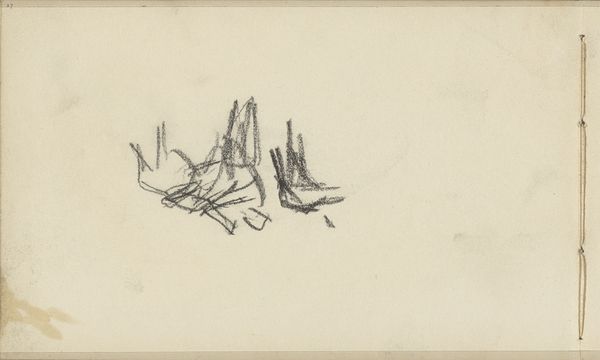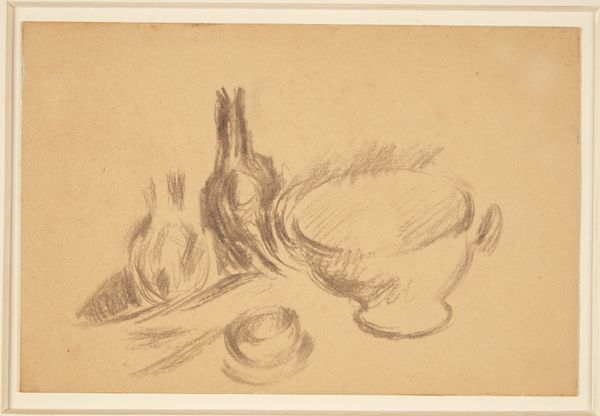
drawing, paper, pencil
#
drawing
#
light pencil work
#
16_19th-century
#
shading to add clarity
#
pencil sketch
#
figuration
#
paper
#
personal sketchbook
#
german
#
idea generation sketch
#
ink drawing experimentation
#
pen-ink sketch
#
pencil
#
sketchbook drawing
#
pencil work
#
nude
#
sketchbook art
Copyright: Public Domain
Editor: We're looking at Victor Müller's "Nude with draped scarf," a pencil drawing from the 19th century. It has such a tentative, delicate feel to it. What do you see in this study? Curator: It's fascinating how the seemingly simple sketch speaks volumes about the history of image-making and the symbolic weight of the nude. The draped scarf, while offering a partial covering, paradoxically enhances the viewer's gaze. Think of the cultural memory associated with veiling – from religious connotations of modesty and sanctity, to the seduction of the hidden, the partially revealed. Editor: So, the scarf isn't just a piece of fabric; it carries meaning? Curator: Precisely. Throughout art history, drapery is used to not only conceal, but also to emphasize form, and evoke emotions. Consider how different cultures employ clothing and coverings to communicate social status, religious affiliation, or even psychological states. Müller's choice invites us to consider this play between revealing and concealing. The draping becomes almost allegorical, a suggestion of both vulnerability and protection. Do you find that the work inspires other associations or interpretations based on how covering and uncovering operate in our culture? Editor: That’s interesting! It really makes you think about the artist's intention, and the effect on the viewer. I hadn’t considered how much a simple sketch could evoke such rich symbolism. Curator: Exactly. And the pencil sketch, as a medium, amplifies this. It becomes less about idealized beauty and more about exploring ideas, feelings, and symbolic communication. Editor: Thanks for sharing that insight! I will definitely look at drawings differently from now on!
Comments
No comments
Be the first to comment and join the conversation on the ultimate creative platform.



